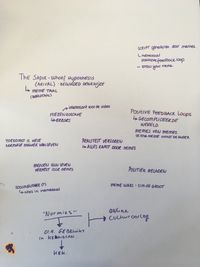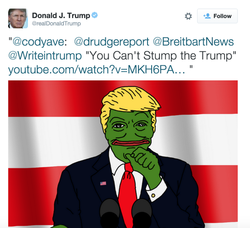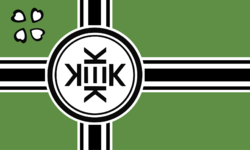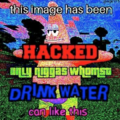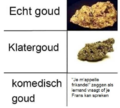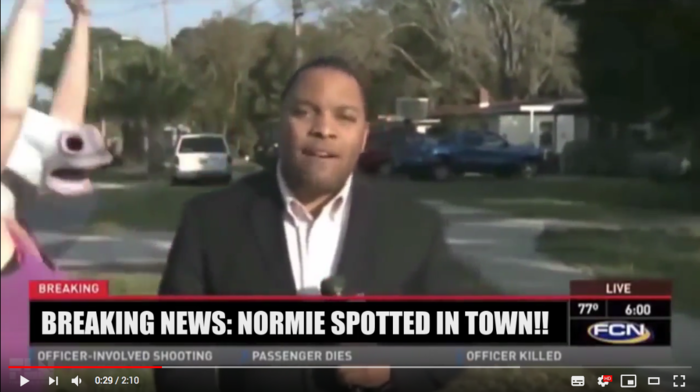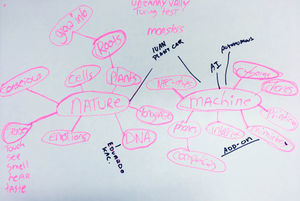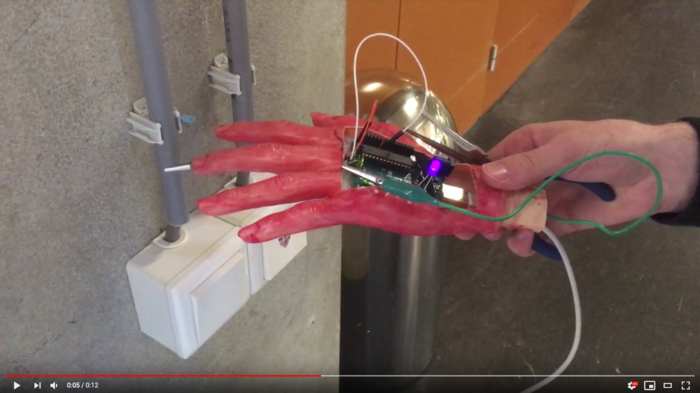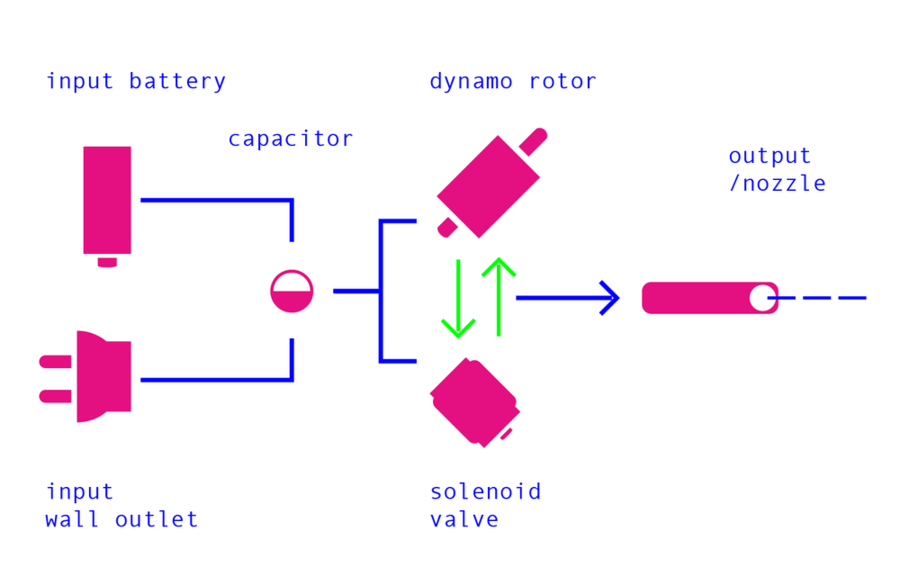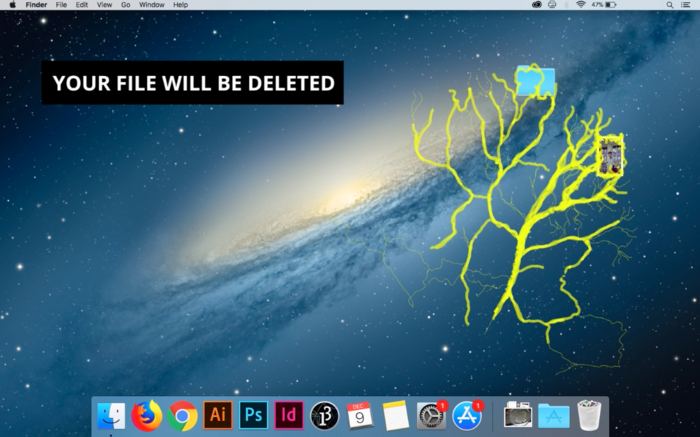Difference between revisions of "User:Ricotta"
| (85 intermediate revisions by the same user not shown) | |||
| Line 1: | Line 1: | ||
| + | | ||
<span style="color:#e60881;">R</span> | <span style="color:#e60881;">R</span> | ||
<span style="color:#e8167a;">I</span> | <span style="color:#e8167a;">I</span> | ||
| Line 5: | Line 6: | ||
<span style="color:#ec4266;">R</span> | <span style="color:#ec4266;">R</span> | ||
<span style="color:#ee505f;">D</span> | <span style="color:#ee505f;">D</span> | ||
| − | <span style="color:#ef5f59;">O </span> | + | <span style="color:#ef5f59;">O </span>[[File:HeadgifR3.gif|80px]] |
| − | <span style="color:#f16d52;"> A</span> | + | <span style="color:#f16d52;">A</span> |
<span style="color:#f37c4b;">B</span> | <span style="color:#f37c4b;">B</span> | ||
<span style="color:#f48a44;">B</span> | <span style="color:#f48a44;">B</span> | ||
| Line 16: | Line 17: | ||
<span style="color:#fde11c;">E</span> | <span style="color:#fde11c;">E</span> | ||
<span style="color:#ffef15;">H</span> | <span style="color:#ffef15;">H</span> | ||
| + | <br><br><br> | ||
| + | = '''Flipdot workshop / Unravel the code''' = | ||
| + | ===copy the base code for processing x flipdot experimenting!=== | ||
| + | <br> | ||
| + | // take pixels from sketch and send to flipdots | ||
| + | |||
| + | import processing.serial.*; | ||
| + | |||
| + | Serial port; | ||
| + | |||
| + | |||
| + | void setup() { | ||
| + | |||
| + | size(200, 200); | ||
| + | |||
| + | String[] ports = Serial.list(); | ||
| + | String portName = ports[ ports.length-1]; | ||
| + | print("Connected to "); | ||
| + | println(portName); | ||
| + | port = new Serial( this, portName, 57600); | ||
| + | } | ||
| + | |||
| + | |||
| + | |||
| + | |||
| + | void draw() { | ||
| + | |||
| + | // FLIP DOT STUFF | ||
| + | loadPixels(); | ||
| + | |||
| + | byte val = 0; | ||
| + | byte b = 0; | ||
| + | for (int x =0; x < 20; x ++) { | ||
| + | for (int y =0; y < 14; y ++) { | ||
| + | int pix = (pixels[(x + y * width)] & 0xff0000) >> 16; | ||
| + | |||
| + | byte bit = byte(pix > 255 /2) ; | ||
| + | val = byte(val | (bit << b)); | ||
| + | b++; | ||
| + | if (b >= 8) { | ||
| + | port.write( val); | ||
| + | b = 0; | ||
| + | val = 0; | ||
| + | } | ||
| + | } | ||
| + | } | ||
| + | port.write('\n'); | ||
| + | } | ||
| + | |||
| + | <br><br><br> | ||
= '''Cybernetics: Working with self-organizing systems''' = | = '''Cybernetics: Working with self-organizing systems''' = | ||
| + | |||
==Critical Making== | ==Critical Making== | ||
| Line 35: | Line 87: | ||
<br><br> | <br><br> | ||
====Findings / references==== | ====Findings / references==== | ||
| + | ---- | ||
[[File:kek1.png|250px|right|thumb|Donald Trump tweets Pepe the Frog]] | [[File:kek1.png|250px|right|thumb|Donald Trump tweets Pepe the Frog]] | ||
[[File:kek2.png|250px|right|thumb|Flag of Kekistan]] | [[File:kek2.png|250px|right|thumb|Flag of Kekistan]] | ||
| Line 40: | Line 93: | ||
<b>Meme culture</b> | <b>Meme culture</b> | ||
| − | - The ''Meme Wars'' by ''Kim de Groot'' or rather [http://www.monalisa-s.org/ ''Mona Lisa's''] is a good example of someone who researches the relationship between Meme culture and folklores. Watch the footage of the Meme Wars video | + | - The ''Meme Wars'' by ''Kim de Groot'' or rather [http://www.monalisa-s.org/ ''Mona Lisa's''] is a good example of someone who researches the relationship between Meme culture and folklores. Watch the footage of the Meme Wars video [https://www.facebook.com/likemonalisas/videos/651438051855441/ here<<] |
- ''Pepe the Frog'' is a classic meme icon, and it is used in countless Meme's. However, since ''Donald Trump'' used this Meme (see image on the right), ''Pepe the Frog became'' a political symbol of the right-wing society. It also became the mascot of ''Kekistan'', a fantasy world which is part of a strange sub-culture. This interesting (Dutch) documentary about ''Kekistan'' can be found [https://www.vpro.nl/programmas/tegenlicht/kijk/afleveringen/2017-2018/Trollen--Trump---Thierry.html here<<] | - ''Pepe the Frog'' is a classic meme icon, and it is used in countless Meme's. However, since ''Donald Trump'' used this Meme (see image on the right), ''Pepe the Frog became'' a political symbol of the right-wing society. It also became the mascot of ''Kekistan'', a fantasy world which is part of a strange sub-culture. This interesting (Dutch) documentary about ''Kekistan'' can be found [https://www.vpro.nl/programmas/tegenlicht/kijk/afleveringen/2017-2018/Trollen--Trump---Thierry.html here<<] | ||
| Line 46: | Line 99: | ||
- This is certainly not the first time where presidents get intermigled with Memes. [https://www.youtube.com/watch?v=Ofu_089eZyI This] is a little (joke) example of a Barack Obama Meme. | - This is certainly not the first time where presidents get intermigled with Memes. [https://www.youtube.com/watch?v=Ofu_089eZyI This] is a little (joke) example of a Barack Obama Meme. | ||
| − | - Memes often get merged with other Memes, and carry a different value with their origin and references. [https://knowyourmeme.com/memes/kek Origin of the name | + | - Memes often get merged with other Memes, and carry a different value with their origin and references. [https://knowyourmeme.com/memes/kek Origin of the name ''Kek'']. |
<br> | <br> | ||
| Line 63: | Line 116: | ||
File:m4.png| Meme example. | File:m4.png| Meme example. | ||
</gallery> | </gallery> | ||
| + | |||
| + | ===Result / video=== | ||
| + | ---- | ||
| + | |||
| + | We were inspired by ''Sunspring'''s [https://www.youtube.com/watch?v=LY7x2Ihqjmc Sci-Fi short video]. The creators of this video made a machine learning script for their project. As quoted from the link: "...They created "Jetson" and fueled him with hundreds of sci-fi TV and movie scripts..." and "...they gave themselves 48 hours to shoot and edit whatever Jetson decided to write.". This also had something to do with language. What if this script will all of the sudden make sense in the future? With this hypothesis in mind, we made our own hypothesis. | ||
| + | |||
| + | Our video is based on real Memes found on the internet. Just by how memes merge, we merged memes to fit the script. Hypothesis: ''"What if meme culture takes over and meme language would be understood by everyone?".'' <br> | ||
| + | Below is a preview image, [https://www.youtube.com/watch?v=2TM3ReavUcA&feature=youtu.be <span style="font-size:20px; color:white; background: linear-gradient(to right, #e60881, #e8167a, #e92574, #eb336d, #ec4266, #ee505f, #ef5f59, #f16d52, #f37c4b, #f48a44, #f6983d, #f7a737, #f9b530, #fac429, #fcd223, #fde11c ,#ffef15);" > Click here for the video</span>] | ||
| + | |||
| + | [[File:vid.png|700px]] | ||
| + | <br><Br><Br><Br> | ||
| + | ==Cybernetic Prosthetics: The Sixth Sense project== | ||
| + | [[File:Mindm.jpg|300px|right|thumb|Mindmap/ideas before getting into research]] | ||
| + | |||
| + | "A new relationships between a biological organism- and a machine, relating to our explorations on reimagining technology in the posthuman age." With this assignment we were building working prototype which "simulate interactive feedback loops that generate emergent forms." Due to common interests/ambitions, I teamed up with [[User: Timaeus | Tim van Hooft]] and [[User:Much W0W|Jorijn de Jonge]]. | ||
| + | |||
| + | ===Research=== | ||
| + | |||
| + | Since writing down ideas and common interests really worked in the previous project, we started doing this first. Many ideas came to mind out of excitement, so it was a struggle to narrow our ideas down to one subject. | ||
| + | |||
| + | We again, started a shared [https://www.google.com/drive/ Google Drive document] to collect all our found information. | ||
| + | <br><br> | ||
| + | ====Findings / references==== | ||
| + | ---- | ||
| + | <br> | ||
| + | <b>Human and technology</b> | ||
| + | [[File:Nn.png|200px|right|thumb|'Next nature' concept image/meme - QR-code]] | ||
| + | |||
| + | At first we desperately wanted to do something with plants and nature, but why? What is the benefit of this? how can we realise this in less than two weeks. | ||
| + | |||
| + | - [http://www.lesmutants.com/cintiVO.htm ''The Cactus Project''] by ''Laura Cinti'' made us very excited. We found it such a remarkable idea that the usage of technology could merge genes of plant and human.<br> | ||
| + | - The [https://www.nextnature.net/projects/ ''Next Nature Net''] is also very iconic concerning nature and technology. ''The modular body'' drew our attention.<br> | ||
| + | - ''What happens when art, nature and technology meet head-on?'' [https://www.youtube.com/watch?v=Si4Vd9fnkRo This] is a small collaboration video of a project done. | ||
| + | |||
| + | We still could not figure out what we wanted with the project, so we decided to take a step back, and rather look at the things which make us excited.<br> | ||
| + | To have a 'sixth sense' fitted our interests and context of the assignment more, so we decided to build on from this point. How interesting could it be to sense something which we can't now? How we have 5 natural senses and the ability to add a sense would create a new merge between tech and nature. | ||
| + | |||
| + | - ''Richard Vijgen''s project called [http://www.white-spots.net/ ''White Spots''] really suited our project while we thought of our future perspectives and the constant expanding of The internet of things around us. | ||
| + | |||
| + | |||
| + | ====Process of prototype==== | ||
| + | ---- | ||
| + | <br> | ||
| + | We decided to create an extension of our hands, that would be able to show on touch that you are near an electro magnetic field. | ||
| + | |||
| + | We found a [http://www.aaronalai.com/emf-detector tutorial] on how to create an easy ''EMF detector'' from ''Aaron Alai''. With just the use of an external battery, LED light, resistor and piece of current lead wire. | ||
| + | |||
| + | <gallery> | ||
| + | File:Emf1.JPG|EMF sensor process - figuring out | ||
| + | File:Sixth-sense8.JPG|EMF sensor process | ||
| + | File:Emf3.JPG|EMF sensor process - working electronics | ||
| + | File:Emf4.png|EMF sensor process - working model | ||
| + | </gallery> | ||
| + | |||
| + | <br><br> | ||
| + | |||
| + | ====Code and practicalities==== | ||
| + | ---- | ||
| + | <br> | ||
| + | '''The LED light goes in digital input 11 and Ground | ||
| + | The current lead wire is attachted to Analog output 1 and attached to a 1M resistor stated in analog output 5. | ||
| + | ''' | ||
| + | |||
| + | '''We used this code for the Arduino Software: | ||
| + | ''' | ||
| + | // Aaron ALAI EMF Detector April 22nd 2009 VERSION 1.0 | ||
| + | // aaronalai1@gmail.com | ||
| + | // *future note, put in averaging function to average val which should result in a more | ||
| + | // smooth response from the led. I will give you a hint on how to make an averaging function; | ||
| + | // it involves the use of an array | ||
| + | |||
| + | |||
| + | int inPin = 5; // analog 5 | ||
| + | int val = 0; // where to store info from analog 5 | ||
| + | int pin11 = 11; // output of red led | ||
| + | |||
| + | void setup() { | ||
| + | |||
| + | Serial.begin(9600); | ||
| + | |||
| + | } | ||
| + | |||
| + | void loop() { | ||
| + | |||
| + | val = analogRead(inPin); // reads in the values from analog 5 and | ||
| + | //assigns them to val | ||
| + | if(val >= 1){ | ||
| + | |||
| + | val = constrain(val, 1, 100); // mess with these values | ||
| + | val = map(val, 1, 100, 1, 255); // to change the response distance of the device | ||
| + | analogWrite(pin11, val); // *note also messing with the resistor should change | ||
| + | // the sensitivity | ||
| + | }else{ // analogWrite(pin11, val); just tuns on the led with | ||
| + | // the intensity of the variable val | ||
| + | analogWrite(pin11, 0); // the else statement is just telling the microcontroller | ||
| + | // to turn off the light if there is no EMF detected | ||
| + | } | ||
| + | |||
| + | Serial.println(val); // use output to aid in calibrating | ||
| + | |||
| + | } | ||
| + | |||
| + | You can use a variety of materials to use as an EMF antenna, all with different sensitivities and possibilities. | ||
| + | |||
| + | We also used a variety of different materials but found that a simple alligator clip attached to the resistor works best and finds a good balance between the sensitivities. | ||
| + | |||
| + | <br><br> | ||
| + | ====Finalizing prototype==== | ||
| + | ---- | ||
| + | <br> | ||
| + | With a simple Halloween-store hand, we managed to sketch the idea of having a sixth sense. What if we took this years in the future? will it be in our hands? or will it serve as an extra limb somewhere else on our bodies? | ||
| + | <br> | ||
| + | |||
| + | <gallery> | ||
| + | File:Sixth-sense11.JPG|EMF sensor process - figuring out | ||
| + | File:Sixth-sense12.JPG|EMF sensor process | ||
| + | File:Emf5.JPG|EMF sensor process - working electronics | ||
| + | </gallery> | ||
| + | |||
| + | ===Result / video=== | ||
| + | ---- | ||
| + | <br> | ||
| + | In the end, we were surprised by the result, and very happy that it actually worked. <br> | ||
| + | Below is a preview image, [https://youtu.be/IPpQrGbxSas <span style="font-size:20px; color:white; background: linear-gradient(to right, #e60881, #e8167a, #e92574, #eb336d, #ec4266, #ee505f, #ef5f59, #f16d52, #f37c4b, #f48a44, #f6983d, #f7a737, #f9b530, #fac429, #fcd223, #fde11c ,#ffef15);" > Click here for the video/demonstration</span>] | ||
| + | |||
| + | [[File:Vid2.png|700px]] | ||
| + | <br><Br><Br><Br> | ||
| + | |||
| + | = '''From devices to systems''' = | ||
| + | |||
| + | <b>Breast pump /sucking device</b> | ||
| + | |||
| + | [[File:Br1.jpg|700px]] | ||
| + | |||
| + | Together with my colleague Lianne Verkerk, we have chosen this device because it is not something convenient. How does something, which manipulates the air flow work? We were really curious. Below you will find a selection of steps which were crucial for understanding this strange device. | ||
| + | |||
| + | <gallery> | ||
| + | File:Br2.jpg|Step 1 - Opening up | ||
| + | File:Br3.jpg|Step 2 - Gathering information | ||
| + | File:Br4.jpg|Step 3 - Experimenting w/ cirquits | ||
| + | File:Br5.jpg|Step 4 - Opening pump | ||
| + | File:Br6.jpg|Step 5 - Picking pump apart | ||
| + | </gallery> | ||
| + | <br><br> | ||
| + | ==Cartography of Complex Systems & the Anthropocene== | ||
| + | <br> | ||
| + | Soon after speculating what the possibilities were with the breast pump, I started making a mapping of this device. After that it really became clear how the system worked. One of the most remarkable things was that it had two options as an imput; either wall imput or battery. Of course this makes sense if you zoom out and see the wider context of this device, because it needs to be carried to different places. | ||
| + | <br> | ||
| + | Mainly all of these items within this device were new to me, but the concepts behind remained known. For example, the system behind a capacitor made so much sense after researching about it. Like a water barell which fills and unleashed its water after a tipping point. | ||
| + | However, perhaps the most remarkable thing to me was the symbiotic system of the Solenoid Valve and the Dynamo Rotor, which only worked like some sort of wave when they were connected to each other. | ||
| + | |||
| + | [[File:Circuit.png|1000px]] | ||
| + | <br><Br><Br><Br> | ||
| + | |||
| + | = '''Unravel the code''' = | ||
| + | ==Digital Rituals - MOCAP== | ||
| + | [[File:Mo4.jpg|300px|right|thumb|Motion capture suit with 3D]] | ||
| + | This project is definitely one of my favorites. It was a group-efford with the MICA students. Within a short range of time, our collaboration resulted in an exhibition with the data of captured motion.<br> | ||
| + | Motion-capture data - How have daily rituals evolved in the digital age? Digital Rituals is a collection of digital sign language created by individuals connected by technology. | ||
| + | This group-efford was a collaboration between WDKA and MICA students, to unravel the code within a few days. My focus on this project was making this piece interactive, using mainly processing and wekinator.<br> | ||
| + | ''collab with: Samiha Alam, Khadija Aziz, Noemi Biro, Sumangla Bishnoi, Kimmy Tsai, Hyunji Jung, Cheng Qin, Tutu Guo.'' | ||
| + | <br><br> | ||
| + | Below is a preview image, [https://www.ricardo-abbaszadeh.com/digital-rituals.html <span style="font-size:20px; color:white; background: linear-gradient(to right, #e60881, #e8167a, #e92574, #eb336d, #ec4266, #ee505f, #ef5f59, #f16d52, #f37c4b, #f48a44, #f6983d, #f7a737, #f9b530, #fac429, #fcd223, #fde11c ,#ffef15);" > Please click here for details and videos!</span>] | ||
| + | [[File:Mo1.jpg|700px]] | ||
| + | |||
| + | |||
| + | <br><Br><Br><Br> | ||
| + | |||
| + | = '''Final project: MOLDAPP''' = | ||
| + | ==About/general== | ||
| + | |||
| + | [[File:Molda.png|300px|right|thumb|Part of the research and major end-result]] | ||
| + | |||
| + | ''In short: MOLDAPP is a digital slime mold entity, which prevents users to let their desktops become sloppy.'' | ||
| + | <br><br> | ||
| + | My fascinations in mold/fungus started with my Graphic Design major project, which was researching the material: mold. | ||
| + | <br> This project was all about doing research and reflect upon my findings while working further on the 'outcome'. The most important part of this project was that I were able to allow myself to see these micro-organisms from different perspectives. My major resulted in growing typography from mold (image on the right), and to cherish the generative side of micro-organisms. This was a mere feasible or literal sense on growing mold, and with the potential to eventually digitalize or made into image vectors for example. | ||
| + | <br><br> But with the mold project at Digital Craft, it contained rather a conceptual value. By doing research simultaniously next to experimenting, I was able to keep making sense on my own project. In the next chapter you will be able to look into my research document, which is also my chronological process report of this concept. | ||
| + | |||
| + | ===Research document=== | ||
| + | |||
| + | My research document revealed a lot about what my interests are as a graphic designer. However, it also put me in a certain position where I was not able to have completely control over the outcome. I believe I was too ambitious about what I wanted to achieve within the given time-frame. Because one person could never accomplish this idea alone. What definitely was made clear to me is that even autonomous designers need to work together with multiple disciplines. It definitely became clear to me what my position was in this project, rather than designing an outcome. | ||
| + | <br>If I had for example six months to do this, I would definitely continue my research. I would also look beyond the design world, because this is something which would need more imput and collaborations with different specializations, such as scientists, biologists and more advanced coders. | ||
| + | <br> | ||
| + | [https://drive.google.com/file/d/1Gxsvs2YxkMA6_NGxlLiRUD1nR0ralyis/view?usp=sharing <span style="font-size:20px; color:white; background: linear-gradient(to right, #e60881, #e8167a, #e92574, #eb336d, #ec4266, #ee505f, #ef5f59, #f16d52, #f37c4b, #f48a44, #f6983d, #f7a737, #f9b530, #fac429, #fcd223, #fde11c ,#ffef15);" > Click here to look into my research document</span>] | ||
| + | <br> | ||
| + | <br> | ||
| + | ===Result / video=== | ||
| + | ---- | ||
| + | One of the greatest moments in my research was to compare digital mold with real mold, what is something that real mold is not able to do? What is something digital mold could extend from its organic origin? This conceptal piece is not only about creating a new relationship between human and micro-organisms, it is rather a digital entity which changes the relationshio between human and the (personal) computer.<br> | ||
| + | Even though this is a pure conceptual piece, it is still based on proper research. This project could me managable with the right amount of time and collaborations. Watch the final result of how MOLDAPP could be a programmed living entity as a tool/helper. | ||
| + | <br><br> | ||
| + | Below is a preview image, [https://youtu.be/g7Za2SgGpbk <span style="font-size:20px; color:white; background: linear-gradient(to right, #e60881, #e8167a, #e92574, #eb336d, #ec4266, #ee505f, #ef5f59, #f16d52, #f37c4b, #f48a44, #f6983d, #f7a737, #f9b530, #fac429, #fcd223, #fde11c ,#ffef15);" > Click here for the video</span>] | ||
| + | |||
| + | [[File:Moldapp.png|700px]] | ||
| + | <br><Br><Br><Br> | ||
| + | = '''Position paper''' = | ||
| + | |||
| + | ''Since I am studying at WdKA, I am discovering the new relations between the digital and the physical.''<br> What I find very interesting, is the digital response upon which we visualize. In a certain way, it creates a feedback loop, which eventually alters the way we think. | ||
| + | Since I am fairly new to this craft, I find it hard to specifically pinpoint which craft defines my craft. But I definitely know which of the precious projects fit my interests. | ||
| + | My approach when working on a project always entails connecting the digital 'world' to it. Questions such as 'how can I compare existing physical structures with those of the digital?' often evoke within me. | ||
| + | However, I have noticed that there is an overlapping theme in all of my projects, which always involves returning subjects. I have noticed that it is always about enhancing us as human beings and question our identity. Subjects never exclude questions such as: how are we different from which we created? What are the differences and similarities between the digital and the physical? What does this politically mean? Is there a symbiotic solution for everything? How is this relevant for me? | ||
| + | <br><br>I never exclude working multidisciplinary, as long as the end will be (audio) visual, I will work with it. I consider that my approach to different issues define which tools or media I use. I certainly do not regret working this way, because the elimination of possible future tools make me feel like I might accidentally bypass new opportunities. However, this is slightly both the result of abominable indecisiveness as I have a lot of interests in this field. | ||
| + | Nonetheless, I am not stating that my reach of tools will be limitless. There are boundaries within circumstances such as; knowledge, accessible tools, tools I dislike and my background as a graphic designer. | ||
| + | My approach repeatedly starts with both researching and experimenting, because it gives a more realistic result to me. While working towards a solution, deadline or end-result, I like to let my process decide which tools and media I need to use. As I have said before; some media are limited by my field of reach. In the future I might have to collaborate with different disciplines to reach this goal. | ||
| + | <br><br> | ||
| + | Even though the borders might get a little bit blurry within this practice, I believe that it sometimes stays very speculative and experimental. Whether it is about organisms living symbiotic with man-made machines, or fitting within a next-nature feedback-loop, it sometimes seems to stop at this conceptual level. | ||
| + | I also believe that this might be due to the impact of our capitalist society, where everything is focused on profit, rather than working with more in-depth matter. | ||
| + | But I also think that there is a certain beauty in following this inquisitive way. In fact, I believe that this a more humane way of thinking. Open source information and seeing ourselves as just another part of a bigger system are, in my opinion, big examples of proper directions we can to follow. | ||
| + | <br><br> | ||
| + | Graphic Design as we all know it, does not necessarily exists anymore, in my opinion. We are not solely making posters and mastering the art of typography anymore. If I think of the age where for example Jan van Toorn was mostly active, I cannot imagine how to put that specific practice in nowadays society. | ||
| + | The Graphic Design major which I am following also debates on the topic of digitalization and the vanishing of graphic design as we know it. Some of my fellow colleagues solely work on hand made products and publications, while I rather look into the future. | ||
| + | I do not want to make old-fashioned graphic design anymore, because I feel that this era already ended. I rather look at what graphic designers will be in the future. In my opinion, this means that graphic designers have to be more multidisciplinary and more collaborative with different fields. | ||
| + | One of the possibilities with a future scenario of high probability is that we have to 'hand over' a lot of tasks during the process, due to smarter computers and automatization. This also means that in a lot of processes we have to co-design with algorithms and machine learning. | ||
| + | Graphic Design has a wider range, such as other fields. Contemporary practitioners usually have multiple qualities which may represent what the old fields used to be. Today we have practitioners such as Andreas Refsgaard (Støj) who co-designs with machine learning, or RNDR whom uses graphic design as a communicative tool towards its audience. | ||
| + | <br><br> | ||
| + | Something more related to which really applies to 'my craft', there are more interests which suit these fluid borders of mine. | ||
| + | As a Graphic Designer, I got more in touch with the idea of generative design. The generative type of Leon Butler and the generative design book of Onformative are just great examples of where my practice could really branch out in the future. | ||
| + | Contemporary studio's discovering borders within the digital and the physical really suit my interests. Studio's such as: Feld RNDR, Field, and Tellart are places where Graphic Design plays a crucial part in establishing their visual language. | ||
Latest revision as of 15:33, 28 October 2019
R
I
C
A
R
D
O  A
B
B
A
S
Z
A
D
E
H
A
B
B
A
S
Z
A
D
E
H
Contents
Flipdot workshop / Unravel the code
copy the base code for processing x flipdot experimenting!
// take pixels from sketch and send to flipdots
import processing.serial.*;
Serial port;
void setup() {
size(200, 200);
String[] ports = Serial.list();
String portName = ports[ ports.length-1];
print("Connected to ");
println(portName);
port = new Serial( this, portName, 57600);
}
void draw() {
// FLIP DOT STUFF loadPixels();
byte val = 0;
byte b = 0;
for (int x =0; x < 20; x ++) {
for (int y =0; y < 14; y ++) {
int pix = (pixels[(x + y * width)] & 0xff0000) >> 16;
byte bit = byte(pix > 255 /2) ;
val = byte(val | (bit << b));
b++;
if (b >= 8) {
port.write( val);
b = 0;
val = 0;
}
}
}
port.write('\n');
}
Cybernetics: Working with self-organizing systems
Critical Making
'Reimagine an existing technology or platform using the provided sets of cards.
'With our group, we simply chose which combination of cards most suited our interests. Thus we ended up with Memes in a dystopian future, realised by video.
This was a collaboration with: Laura Ketting, Jorijn de Jonge and Eva Schoren.
Research
After agreeing on the subject, we immediately began writing down collective knowledge and ideas. How does this fit in the feedback loop as discussed in class? We also started a shared Google Drive document to collect all our found information.
It soon became clear that Memes are not only mere jokes floating around the internet, but they also carry heavy political value. We also discovered that the politically charged messages had to be transfered by language, thus Meme culture has a language on its own.
With these findings in mind, we started to further research and develop our project.
Findings / references
Meme culture
- The Meme Wars by Kim de Groot or rather Mona Lisa's is a good example of someone who researches the relationship between Meme culture and folklores. Watch the footage of the Meme Wars video here<<
- Pepe the Frog is a classic meme icon, and it is used in countless Meme's. However, since Donald Trump used this Meme (see image on the right), Pepe the Frog became a political symbol of the right-wing society. It also became the mascot of Kekistan, a fantasy world which is part of a strange sub-culture. This interesting (Dutch) documentary about Kekistan can be found here<<
- This is certainly not the first time where presidents get intermigled with Memes. This is a little (joke) example of a Barack Obama Meme.
- Memes often get merged with other Memes, and carry a different value with their origin and references. Origin of the name Kek.
Language of Meme culture
- Just like our languages, Meme culture language changes over time. When we master a language, it changes the way we think, just as Lera Boroditsky explains in this Ted Talk.
- This occurrence is also known as the Sapir-Whorf Hypothesis. The Sapir Whorf hypothesis states that the specific language we speak influences the way we think about reality. It is also used in Sci-Fi such as the movie Arrival (2016).
To conclude
When we compared Meme culture and language, we came to to the conclusion that there is not much difference between these two matters. We were deeply interested in the seriousness of something which appears funny. While we got deeper into researching Meme culture, we found a lot of images, which were beyond our understanding; this clearly reveals the linguistic part of this subject. Examples of Meme feedback loop and found Memes beyond our understanding below:
Result / video
We were inspired by Sunspring's Sci-Fi short video. The creators of this video made a machine learning script for their project. As quoted from the link: "...They created "Jetson" and fueled him with hundreds of sci-fi TV and movie scripts..." and "...they gave themselves 48 hours to shoot and edit whatever Jetson decided to write.". This also had something to do with language. What if this script will all of the sudden make sense in the future? With this hypothesis in mind, we made our own hypothesis.
Our video is based on real Memes found on the internet. Just by how memes merge, we merged memes to fit the script. Hypothesis: "What if meme culture takes over and meme language would be understood by everyone?".
Below is a preview image, Click here for the video
Cybernetic Prosthetics: The Sixth Sense project
"A new relationships between a biological organism- and a machine, relating to our explorations on reimagining technology in the posthuman age." With this assignment we were building working prototype which "simulate interactive feedback loops that generate emergent forms." Due to common interests/ambitions, I teamed up with Tim van Hooft and Jorijn de Jonge.
Research
Since writing down ideas and common interests really worked in the previous project, we started doing this first. Many ideas came to mind out of excitement, so it was a struggle to narrow our ideas down to one subject.
We again, started a shared Google Drive document to collect all our found information.
Findings / references
Human and technology
At first we desperately wanted to do something with plants and nature, but why? What is the benefit of this? how can we realise this in less than two weeks.
- The Cactus Project by Laura Cinti made us very excited. We found it such a remarkable idea that the usage of technology could merge genes of plant and human.
- The Next Nature Net is also very iconic concerning nature and technology. The modular body drew our attention.
- What happens when art, nature and technology meet head-on? This is a small collaboration video of a project done.
We still could not figure out what we wanted with the project, so we decided to take a step back, and rather look at the things which make us excited.
To have a 'sixth sense' fitted our interests and context of the assignment more, so we decided to build on from this point. How interesting could it be to sense something which we can't now? How we have 5 natural senses and the ability to add a sense would create a new merge between tech and nature.
- Richard Vijgens project called White Spots really suited our project while we thought of our future perspectives and the constant expanding of The internet of things around us.
Process of prototype
We decided to create an extension of our hands, that would be able to show on touch that you are near an electro magnetic field.
We found a tutorial on how to create an easy EMF detector from Aaron Alai. With just the use of an external battery, LED light, resistor and piece of current lead wire.
Code and practicalities
The LED light goes in digital input 11 and Ground
The current lead wire is attachted to Analog output 1 and attached to a 1M resistor stated in analog output 5.
We used this code for the Arduino Software: // Aaron ALAI EMF Detector April 22nd 2009 VERSION 1.0 // aaronalai1@gmail.com // *future note, put in averaging function to average val which should result in a more // smooth response from the led. I will give you a hint on how to make an averaging function; // it involves the use of an array
int inPin = 5; // analog 5
int val = 0; // where to store info from analog 5
int pin11 = 11; // output of red led
void setup() {
Serial.begin(9600);
}
void loop() {
val = analogRead(inPin); // reads in the values from analog 5 and
//assigns them to val
if(val >= 1){
val = constrain(val, 1, 100); // mess with these values
val = map(val, 1, 100, 1, 255); // to change the response distance of the device
analogWrite(pin11, val); // *note also messing with the resistor should change
// the sensitivity
}else{ // analogWrite(pin11, val); just tuns on the led with
// the intensity of the variable val
analogWrite(pin11, 0); // the else statement is just telling the microcontroller
// to turn off the light if there is no EMF detected
}
Serial.println(val); // use output to aid in calibrating
}
You can use a variety of materials to use as an EMF antenna, all with different sensitivities and possibilities.
We also used a variety of different materials but found that a simple alligator clip attached to the resistor works best and finds a good balance between the sensitivities.
Finalizing prototype
With a simple Halloween-store hand, we managed to sketch the idea of having a sixth sense. What if we took this years in the future? will it be in our hands? or will it serve as an extra limb somewhere else on our bodies?
Result / video
In the end, we were surprised by the result, and very happy that it actually worked.
Below is a preview image, Click here for the video/demonstration
From devices to systems
Breast pump /sucking device
Together with my colleague Lianne Verkerk, we have chosen this device because it is not something convenient. How does something, which manipulates the air flow work? We were really curious. Below you will find a selection of steps which were crucial for understanding this strange device.
Cartography of Complex Systems & the Anthropocene
Soon after speculating what the possibilities were with the breast pump, I started making a mapping of this device. After that it really became clear how the system worked. One of the most remarkable things was that it had two options as an imput; either wall imput or battery. Of course this makes sense if you zoom out and see the wider context of this device, because it needs to be carried to different places.
Mainly all of these items within this device were new to me, but the concepts behind remained known. For example, the system behind a capacitor made so much sense after researching about it. Like a water barell which fills and unleashed its water after a tipping point.
However, perhaps the most remarkable thing to me was the symbiotic system of the Solenoid Valve and the Dynamo Rotor, which only worked like some sort of wave when they were connected to each other.
Unravel the code
Digital Rituals - MOCAP
This project is definitely one of my favorites. It was a group-efford with the MICA students. Within a short range of time, our collaboration resulted in an exhibition with the data of captured motion.
Motion-capture data - How have daily rituals evolved in the digital age? Digital Rituals is a collection of digital sign language created by individuals connected by technology.
This group-efford was a collaboration between WDKA and MICA students, to unravel the code within a few days. My focus on this project was making this piece interactive, using mainly processing and wekinator.
collab with: Samiha Alam, Khadija Aziz, Noemi Biro, Sumangla Bishnoi, Kimmy Tsai, Hyunji Jung, Cheng Qin, Tutu Guo.
Below is a preview image, Please click here for details and videos!
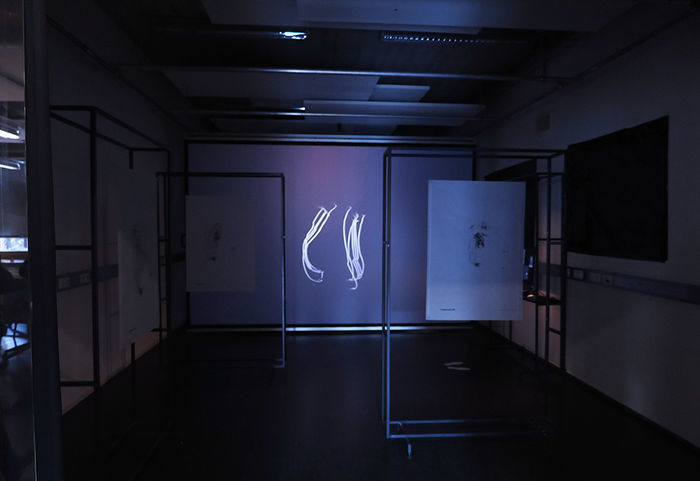
Final project: MOLDAPP
About/general
In short: MOLDAPP is a digital slime mold entity, which prevents users to let their desktops become sloppy.
My fascinations in mold/fungus started with my Graphic Design major project, which was researching the material: mold.
This project was all about doing research and reflect upon my findings while working further on the 'outcome'. The most important part of this project was that I were able to allow myself to see these micro-organisms from different perspectives. My major resulted in growing typography from mold (image on the right), and to cherish the generative side of micro-organisms. This was a mere feasible or literal sense on growing mold, and with the potential to eventually digitalize or made into image vectors for example.
But with the mold project at Digital Craft, it contained rather a conceptual value. By doing research simultaniously next to experimenting, I was able to keep making sense on my own project. In the next chapter you will be able to look into my research document, which is also my chronological process report of this concept.
Research document
My research document revealed a lot about what my interests are as a graphic designer. However, it also put me in a certain position where I was not able to have completely control over the outcome. I believe I was too ambitious about what I wanted to achieve within the given time-frame. Because one person could never accomplish this idea alone. What definitely was made clear to me is that even autonomous designers need to work together with multiple disciplines. It definitely became clear to me what my position was in this project, rather than designing an outcome.
If I had for example six months to do this, I would definitely continue my research. I would also look beyond the design world, because this is something which would need more imput and collaborations with different specializations, such as scientists, biologists and more advanced coders.
Click here to look into my research document
Result / video
One of the greatest moments in my research was to compare digital mold with real mold, what is something that real mold is not able to do? What is something digital mold could extend from its organic origin? This conceptal piece is not only about creating a new relationship between human and micro-organisms, it is rather a digital entity which changes the relationshio between human and the (personal) computer.
Even though this is a pure conceptual piece, it is still based on proper research. This project could me managable with the right amount of time and collaborations. Watch the final result of how MOLDAPP could be a programmed living entity as a tool/helper.
Below is a preview image, Click here for the video
Position paper
Since I am studying at WdKA, I am discovering the new relations between the digital and the physical.
What I find very interesting, is the digital response upon which we visualize. In a certain way, it creates a feedback loop, which eventually alters the way we think.
Since I am fairly new to this craft, I find it hard to specifically pinpoint which craft defines my craft. But I definitely know which of the precious projects fit my interests.
My approach when working on a project always entails connecting the digital 'world' to it. Questions such as 'how can I compare existing physical structures with those of the digital?' often evoke within me.
However, I have noticed that there is an overlapping theme in all of my projects, which always involves returning subjects. I have noticed that it is always about enhancing us as human beings and question our identity. Subjects never exclude questions such as: how are we different from which we created? What are the differences and similarities between the digital and the physical? What does this politically mean? Is there a symbiotic solution for everything? How is this relevant for me?
I never exclude working multidisciplinary, as long as the end will be (audio) visual, I will work with it. I consider that my approach to different issues define which tools or media I use. I certainly do not regret working this way, because the elimination of possible future tools make me feel like I might accidentally bypass new opportunities. However, this is slightly both the result of abominable indecisiveness as I have a lot of interests in this field.
Nonetheless, I am not stating that my reach of tools will be limitless. There are boundaries within circumstances such as; knowledge, accessible tools, tools I dislike and my background as a graphic designer.
My approach repeatedly starts with both researching and experimenting, because it gives a more realistic result to me. While working towards a solution, deadline or end-result, I like to let my process decide which tools and media I need to use. As I have said before; some media are limited by my field of reach. In the future I might have to collaborate with different disciplines to reach this goal.
Even though the borders might get a little bit blurry within this practice, I believe that it sometimes stays very speculative and experimental. Whether it is about organisms living symbiotic with man-made machines, or fitting within a next-nature feedback-loop, it sometimes seems to stop at this conceptual level.
I also believe that this might be due to the impact of our capitalist society, where everything is focused on profit, rather than working with more in-depth matter.
But I also think that there is a certain beauty in following this inquisitive way. In fact, I believe that this a more humane way of thinking. Open source information and seeing ourselves as just another part of a bigger system are, in my opinion, big examples of proper directions we can to follow.
Graphic Design as we all know it, does not necessarily exists anymore, in my opinion. We are not solely making posters and mastering the art of typography anymore. If I think of the age where for example Jan van Toorn was mostly active, I cannot imagine how to put that specific practice in nowadays society.
The Graphic Design major which I am following also debates on the topic of digitalization and the vanishing of graphic design as we know it. Some of my fellow colleagues solely work on hand made products and publications, while I rather look into the future.
I do not want to make old-fashioned graphic design anymore, because I feel that this era already ended. I rather look at what graphic designers will be in the future. In my opinion, this means that graphic designers have to be more multidisciplinary and more collaborative with different fields.
One of the possibilities with a future scenario of high probability is that we have to 'hand over' a lot of tasks during the process, due to smarter computers and automatization. This also means that in a lot of processes we have to co-design with algorithms and machine learning.
Graphic Design has a wider range, such as other fields. Contemporary practitioners usually have multiple qualities which may represent what the old fields used to be. Today we have practitioners such as Andreas Refsgaard (Støj) who co-designs with machine learning, or RNDR whom uses graphic design as a communicative tool towards its audience.
Something more related to which really applies to 'my craft', there are more interests which suit these fluid borders of mine.
As a Graphic Designer, I got more in touch with the idea of generative design. The generative type of Leon Butler and the generative design book of Onformative are just great examples of where my practice could really branch out in the future.
Contemporary studio's discovering borders within the digital and the physical really suit my interests. Studio's such as: Feld RNDR, Field, and Tellart are places where Graphic Design plays a crucial part in establishing their visual language.
